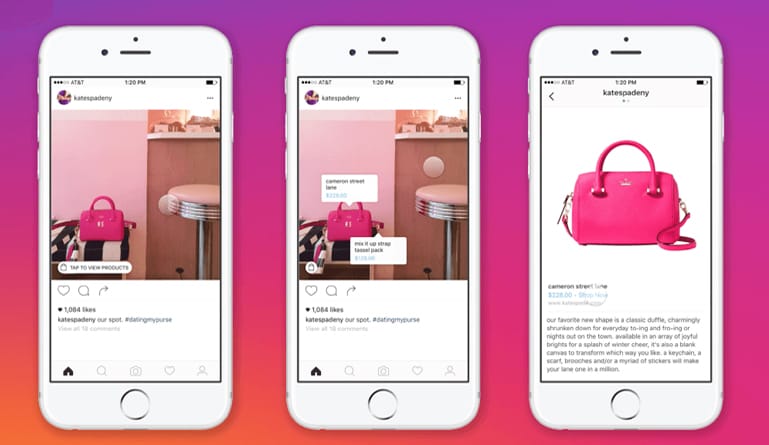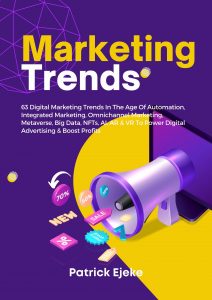Digital Marketing Trends 2022
To say that the previous two years have been turbulent for marketers would be an understatement.
Our lives have grown inexorably intertwined with the online dimension since the beginning of the internet. People send emails, look for information, and, most crucially, purchase things.
Prospects go online first before ever thinking about a B2B supplier. They may stumble across your brand via a sponsored ad, a video, or any of the search engines and (hopefully) become a client.
Agility, flexibility, and ongoing innovation are now standard operating procedures for marketing firms of all sizes and across all industries.
In this context, providing an amazing client experience is a top goal as well as the most ubiquitous problem for marketers right now.
When you pursue digital marketing, you can achieve phenomenal growth with your business. It adapts to your demands, improves brand recognition, is less expensive than traditional marketing, and reaches your target customers all over the world.
Aside from that, you can be certain that it will continue progressing and moving forward: Google gets approximately 77,000 searches each second, 1.66 billion individuals purchase online each year, and 313.2 billion emails are sent.
Time rushed by as we dealt with post-pandemic symptoms, adapted to the work-from-home lifestyle, and the constant changes in marketing trends, and here we are, trying to understand what comes in the years ahead. Throughout the year, digital marketers have studied and implemented a variety of digital marketing innovations and trends. Some are also worth carrying over to the following chapter.
A variety of developments will emerge in the future that will alter how we sell our goods and services. Some of these technologies may take years to develop, but when they do, they will have a big influence on all aspects of marketing.
What worked in 2020 and 2021 was not the same as what worked in prior years.
Once upon a time, artificial intelligence, data-driven marketing, and voice search engine optimization (VSEO) were far-fetched notions. These are some of the most important digital marketing trends right now.
Why shouldn’t they be? After all, if your company wants to be competitive in this competitive internet market, it must keep up with the newest advancements in technology and cultural changes that shape it.
TikTok, which has already surpassed all other platforms as the biggest social media channel among Gen Z users, continued its surge at the start of the year. NFTs and cryptocurrencies gained traction, generating debates about the future of finance. Google said that third-party cookies will be phased out by 2023, giving advertisers and digital marketers less than two years to find new ways to reach their target audiences. Most recently, Facebook changed its name to Meta to reflect the company’s desire to embrace the metaverse, a 3D virtual environment.
During the pandemic, companies started to adopt new digital marketing techniques for 2022, realizing that what had previously worked might not necessarily work in 2022.
Overall, many new and interesting advancements in the digital world will influence how we connect with our audience.
As a marketer, your work is never boring since you must constantly rethink and change your approaches. Trends shift, and so should your job.
On the other hand, distinguishing true trends that will revolutionize the digital marketing environment in a few years from the long-term development of current marketing techniques is difficult.
Is Instagram’s dominance a new digital marketing trend or merely the natural course of events? I would say that it is the consequence of long-planned marketing methods rather than an emergent trend.
We hope this motivates you to pay more attention to the digital part of your company, so to keep you up to date, we’ve compiled a list of the top six digital marketing trends you may apply this year and into the future.
But first, here are a few reasons why having a digital marketing plan is beneficial to your organization.
Reasons to Implement a Digital Marketing Strategy
Digital marketing is crucial since it links a company with its consumers while they are online and is successful across all sectors. It links companies with ideal clients on Google through SEO and PPC, on social media via social media marketing, and on email via email marketing.
Every company need digital marketing. It is critical that you grasp the advantages of digital marketing for businesses, which include:
Increases Your Return On Investment (ROI)
If you want to boost your audience and watch your ROI skyrocket, it isn’t enough to just develop and post content on your website.
Because of increased competition, companies have turned to numerous digital marketing methods such as SEO, social media marketing, and PPC strategies to boost their ROI.
Increases Customer Loyalty
It is often said that attracting and converting new consumers costs more than retaining existing clients.
Repeat customers account for around 40% of all online purchasing income, accounting for 8% of all website visits in the United States.
As a result, to keep your clients involved, you’ll need to use multiple digital marketing strategies such as email marketing and social media interaction.
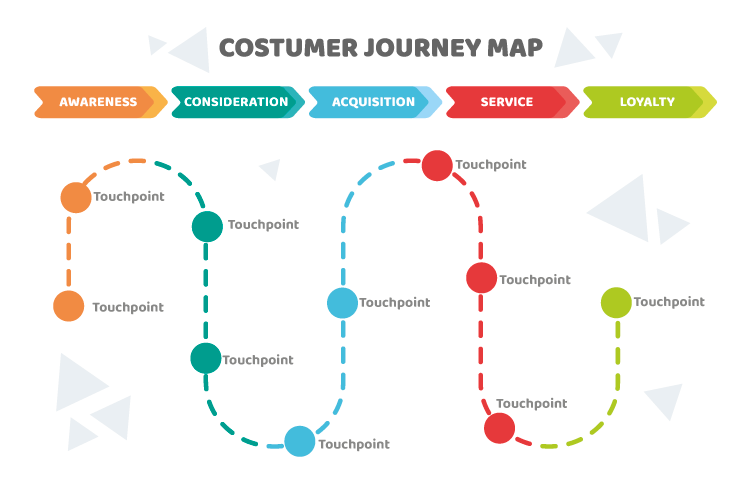
Understanding a customer’s value journey is tough in a typical marketing approach.
For example, in a typical marketing approach, a consumer goes to a real shop after viewing an advertisement on TV or in the newspaper, decides whether or not to purchase based on the advertisement, and then goes to the store to pay for the goods or service.
However, digital marketing allows you to follow every step a consumer takes and gives you the chance to influence their buying decision in the process.
Allows For Precise Audience Targeting
You may cost-effectively target your desired consumers using digital marketing tactics.
This is accomplished via the use of software apps that follow clients’ online actions by acquiring demographic data.
Allows For The Generation Of Consistent Leads
You can use digital marketing methods to build a sales funnel that delivers continuous leads and sales from visitors.
According to Taboola’s research, it also aids in the improvement of the client’s journey.
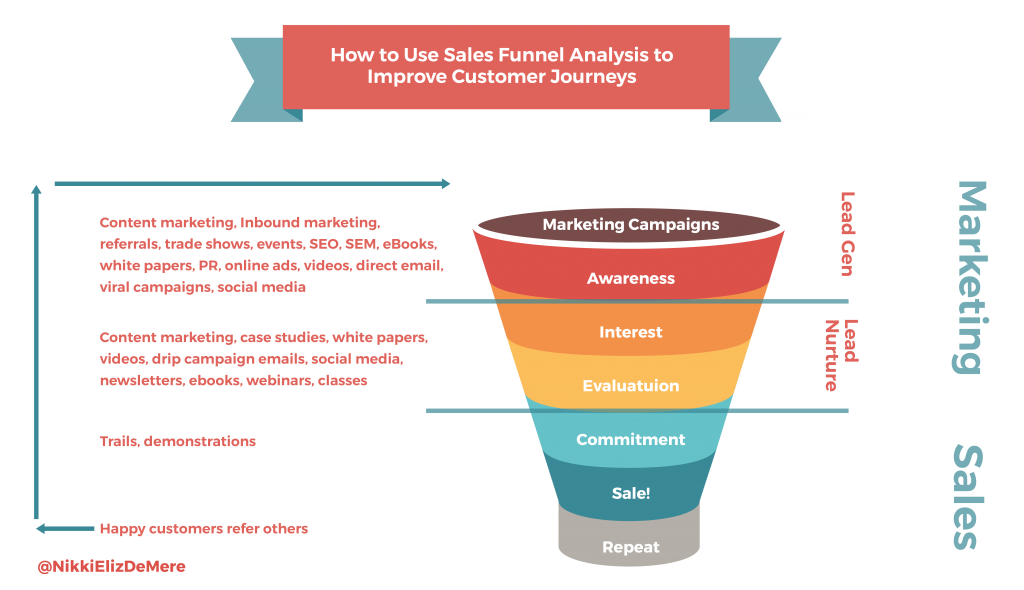
What Are The Current Trends In Digital Marketing?
There are various new digital marketing trends for this year and into the future that can help you get ahead of the competition and grow your company.
Keep in mind that these are forecasts based on what is currently unfolding in marketing. You should never forget the timeless golden guidelines that have been proven effective every time.
New trends, on the other hand, provide an excellent chance to differentiate your brand and put you ahead of the competition. The sooner you recognize it, the greater your chances of being recognized.
As I stated previously, the fast rise of the digital market has ushered in a new era of human interaction in many facets of life. The combined influence of digital technologies in promotion and marketing has shown to be of considerable value to online commerce and distribution for business-centered sectors.
Because the globe is experiencing the viability of the digital age, marketing techniques integrating electronic media are prioritized in today’s corporate strategy. This is aided by the widespread daily consumption of electronic information that is either shared or distributed through the internet.
The many marketing channels and platforms are responsible for the significant growth in brand recognition. SEO, online video content sharing, pay-per-click advertising, online blog advertising, viral marketing methods, and social networking software programs (such as Facebook, Snapchat, Tumblr, and others) are all important digital trends. When they are included in the company strategy, they raise brand recognition and may even give a significant boost in business marketing.
Online branding, also known as E-branding, may typically profit from any kind of digital marketing trend. Digital media may significantly increase your branding strategy by introducing new opportunities and new approaches for you to establish the approach that is best for your company.
It must be seen as an investment. A good digital strategy can dramatically separate your brand from other rivals in the same product line or sector, allowing you and your brand to be in the best possible position in this competitive market. As the trend grows, it raises public awareness of the diverse business products and services being produced for consumer’s pleasure.
It has been concluded that Digital Marketing, with the potential to provide and develop an online brand and product awareness, is on its way to becoming the Future of Marketing.
While many marketing concepts stay constant year after year, the instruments used by firms to achieve marketing success change dramatically over time. Newspaper advertising was formerly quite widespread. Digital advertising and artificial intelligence are becoming key components of corporate marketing strategies.
Every year, there are new technical developments to keep an eye on for businesses. Those that keep ahead of the curve may even achieve new heights of marketing success.
1. Which Performance Metrics Will Be Most Important in the Future?
To address the aforementioned issues, data-backed insights are required. However, which performance indicators are marketing businesses now employing to gauge success?
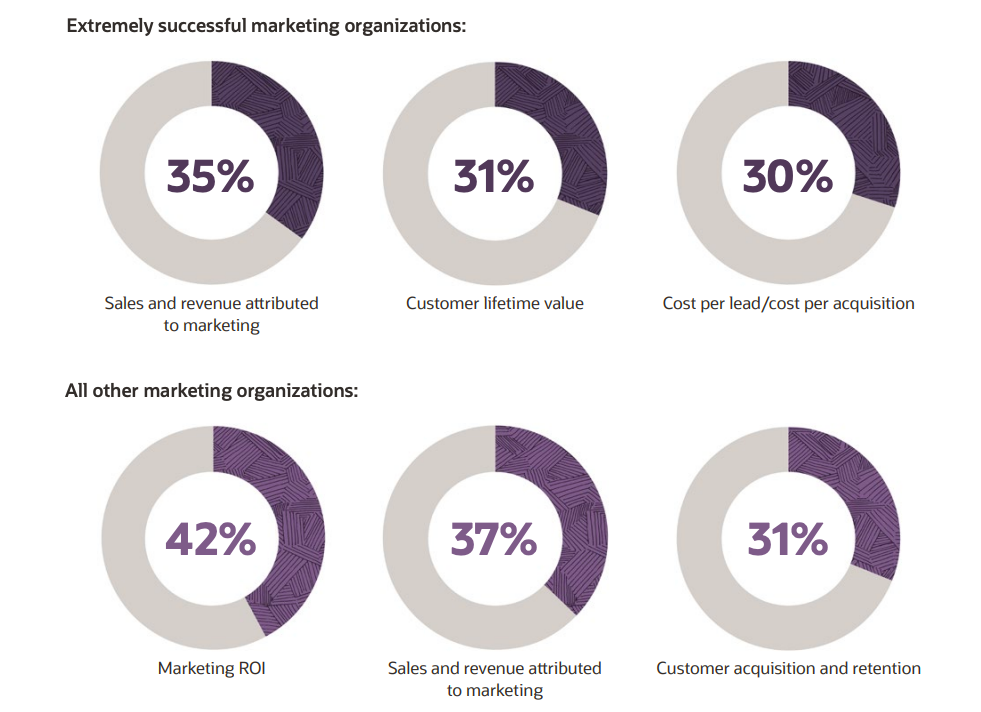
Source: Oracle.com
The following are the top performance measures cited by very successful marketing organizations:
- Marketing-related sales and income.
- Customer life-cycle value.
- CPL (cost per lead) and CPA (cost per acquisition) (CPA).
All other marketing businesses are more likely to measure “Marketing ROI” as well as customer acquisition and retention.
2. Marketing Solutions We Can’t Ignore
Customer data platforms are at the top of the list of the most significant martech solutions that fuel modern-day enterprises.
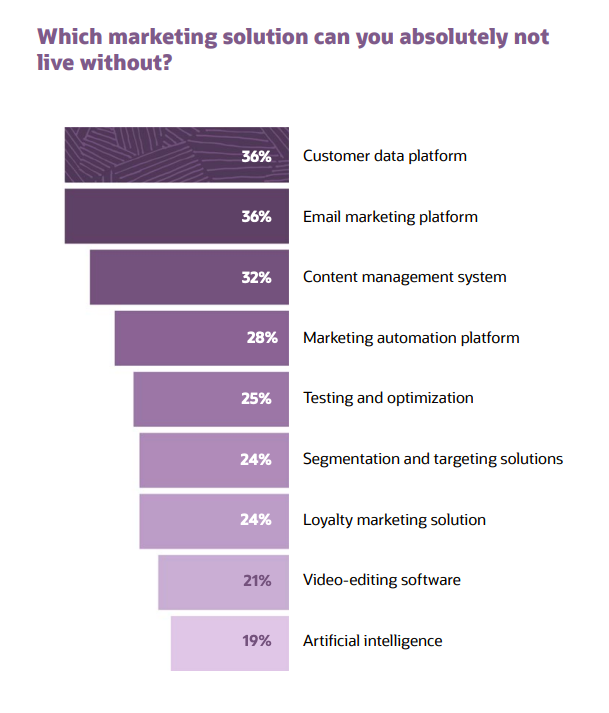
Source: Oracle.com
The top five are email marketing platforms, content management systems, marketing automation platforms, and testing and optimization tools. More on these later in the book.
3. Tell A Genuine Tale
Advertising is a crucial component of marketing, but today’s buyers purchase more than simply a product or service; they also buy the identity that goes with it. People seek a more genuine and honest brand identity that corresponds with their ideas and worldviews.
As a result, digital storytelling entails broadcasting your company’s beliefs, history, and narratives behind your offerings across all digital media. Unlike advertising, this kind of marketing is regarded to be more real and trustworthy.
What started as a fad on a single network has spread to every major social media platform. Their short life is the secret to their popularity and success in digital marketing. A narrative only lasts 24 hours, which achieves a few things:
- Businesses and brands can share more authentic content.
- Content may be targeted to persons who wish to view it.
- The postings engage viewers on a deeper level.
- People feel compelled to stay in contact with a brand they enjoy.
Storytelling is always important in brand marketing. However, when it comes to marketing your product in today’s market, customers are weary of hearing how you, the brand, feel your products or services are superior to the competitors. They want to know how you delivered on your commitments in a manner that met their requirements and exceeded their expectations.
This isn’t to say that businesses should stand aside and let their customers speak for themselves. Rather, your marketing should shift its focus to storytelling—rather than simply telling the consumer the benefits of their product or why it is superior to competitors, businesses should demonstrate how the product or service can help to solve a specific problem through stories and customer testimonials.
It may not result in immediate sales, but it is an excellent approach to position your brand in the minds and hearts of customers who are investigating a certain problem. That way, when they run across that problem, you’ll be the first person they think of.
There are several applications for storytelling. They might be a more raw live video, or they can be a call to action. They may also be used by digital marketers to collect information via polls and quizzes. Furthermore, stories may be tailored to particular audiences by using location and geofilters.
Digital storytelling distinguishes you from your competition and strategically positions your brand to be effective and capture more of the market.
4. Concentrate On Your Target Audience
Over a year, social media users have become tired, nervous, and occasionally sad as a result of the continual onslaught of material in their feeds. Some have even gone so far as to cancel their accounts. Those who stay confront a barrage of commercials, campaigns, and news that fills their social feeds every day, and to say it’s saturated is an understatement.
Consider how many sales-y posts each individual encounters in a two-minute browse, and how and why yours would cut through the noise. Focus your approach on engaging your current audience and expanding your database, and your message will reach people who are most interested in what you do.
As the digital environment evolves, consumers are getting more choosy about the material they receive and consume, and as a result, their expectations are high—don’t be one of the accounts that must be unfollowed.
5. Social Messaging Apps
If you believe social messaging applications are just for sending emoticons to your buddies, consider the following statistics:
- The top three social messaging applications, WhatsApp, Facebook Messenger, and WeChat, together have 4.5 billion users, more than Facebook or YouTube.
- Additionally, more than 56% of worldwide messaging app users have messaged businesses to obtain more information at any point in the buyer’s journey.
Another example of a conversational marketing approach is the use of social messaging applications. People expect companies to be present on messaging applications since it is a direct and simple method to communicate with them.
Some of the reasons why your firm should embrace messaging applications are as follows:
- Encourage contact
- Provide timely information
- Include individuals in events.
- Restore prospective consumers’ trust
- Offer assistance and support
- Increase sales
Social media apps are among the most sought-after digital marketing techniques this year, with over 1.3 billion monthly users on Facebook and 1.6 billion monthly users on WhatsApp.
As more people use and register for various social media apps, this digital marketing technique continues to be a viable platform for companies to sell their goods and services.
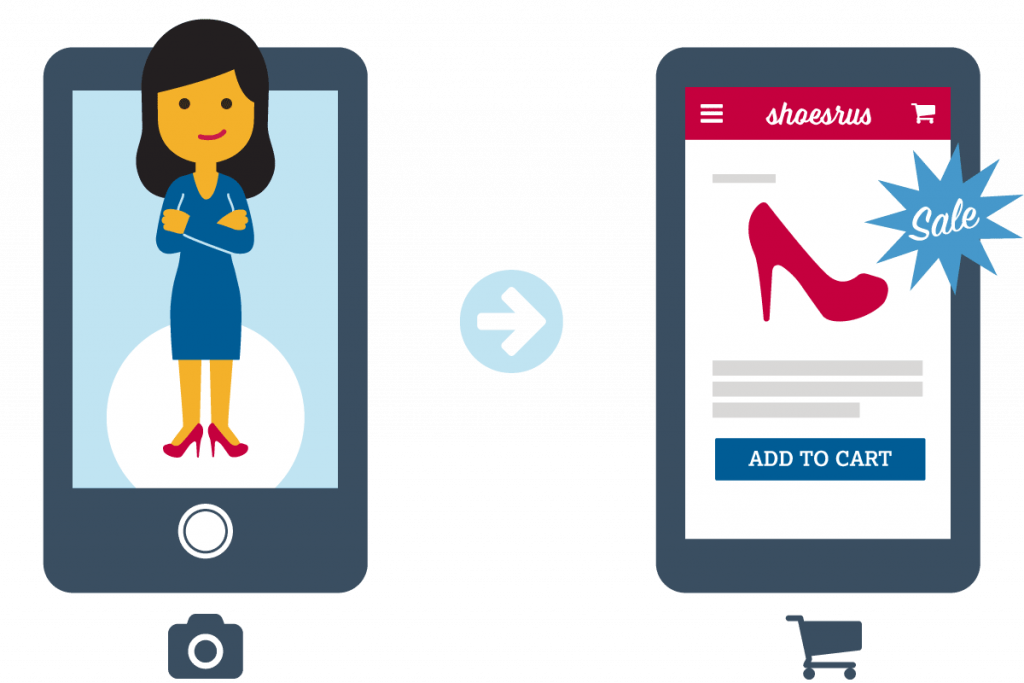
6. Stories from Social Media
During the pandemic months, when there were many lockdowns, social media sites devised the notion of incorporating ‘stories’ elements into their applications. It all began with Snapchat’s ‘my story,’ then Instagram, Facebook, and YouTube, as seen in the image:
The stories are one-of-a-kind and often vanish after a short amount of time, a unique trait that enables advertisers to capitalize on FOMO.
The following are some of the advantages of implementing social media stories:
- Improved brand presence
- Extremely affordable
- An effective method for connecting with your younger audience
- Allows for continuous interaction with your followers.
Snapchat was the first brand to popularize the term “Stories.” Then came Instagram and Facebook, and finally, YouTube, LinkedIn, and Twitter debuted their story formats, although under different names.
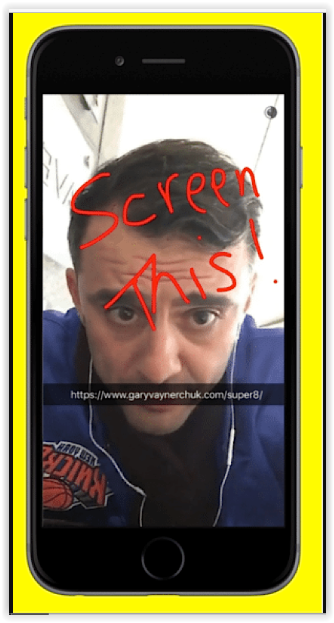
Source:Singlegrain.com
Stories are postings that are removed after 24 hours. Despite (or maybe because of) their simplicity, stories enable marketers to deliver authentic information and engage on a human level with their audiences.
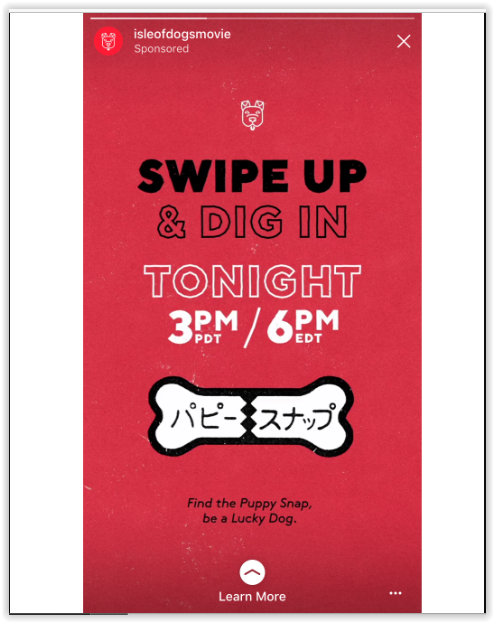
Here are some examples of how you may leverage social media stories to engage your audience:
- Make use of polls on Instagram Stories.
- Include links in your social media Stories.
- Make use of Snapchat geofilters.
- Include location tags.
- Include references from other businesses and your fans.
- When developing Stories, experiment with live video.
- Use clear call-to-actions to entice followers to learn more.
7. Marketing Using Influencers
Yes, we did remark earlier that the end of 2021 caused some skepticism in the influencer marketing industry, but it doesn’t imply this branch is shutting.
When we think of “influencers,” we usually think of celebrities who represent famous businesses or bloggers who provide life tips. They are referred to as influencers since their candid comments impact customer purchasing choices. And it’s no different in B2B—except you may have heard of them as industry thought leaders.
Influencer marketing is very efficient when a firm collaborates with an influencer whose audience matches the brand’s buyer profile.
Influencer marketing will continue to be important beyond this year. Furthermore, it’s an excellent approach for firms to connect with their target demographic and look more empathetic.
Influencer marketing is the number one industry marketing trend for 2022 and beyond, according to Hubspot. It may be put up on media platforms such as Instagram, YouTube, or TikTok, or it can be delivered as a podcast or blog.
There are countless more methods to include influencers in your digital marketing tactics this year. Consider the number of social media channels available to you – not only can you switch between Instagram, TikTok, and YouTube, but you can also choose from a variety of marketing options inside the selected app. Instagram, for example, provides regular posts, Stories, and, more recently, Reels.
Brands may use influencer marketing to create trust, improve brand recognition, reinforce brand message via real endorsements, and reach more engaged and better-qualified audiences.
Just be cautious who you pick as influencers to convert digital users. Detailed audience research is part of the influencer marketing approach. There are a variety of tools available to assist you in identifying the proper influencers.
Recommendation: Marketers should search for ways to collaborate with industry leaders.
8. Concentrate On Video Marketing
I’m sure you’ve heard of the “mobile-first” trend that has been going on for a few years. And today, with 5G and faster mobile data plans, video streaming on smartphones and tablets is simpler than ever.
Video marketing is one of the most significant marketing trends today, and it is expected to remain so for the next 5-10 years. According to a Biteable survey:
- Video is used as a marketing tool by 60% of organizations.
- 61% of marketers consider video to be a “very significant or very vital” component of their marketing strategy.
- 74% believe video provides a higher return on investment than static graphics.
- 52% said video helps them create trust with prospective consumers.
Videos are the way to go if you want to increase engagement and conversation with your prospective and present clients. Because visual content is regarded more favorably by the human brain, it is retained in memory for a longer period. Videos may help you learn more about your goods or services, create brand loyalty, and boost ROI.
According to Lemon Light, video marketing statistics are remarkable and will be part of the new digital marketing trends this year and in the future.
70% of customers said they have shared a brand’s video.
In addition, 72 percent of organizations claimed that video marketing increased their conversion rates.
Video will replace static assets and become the cornerstone of all marketing campaigns, says global marketing consultant Tim Parkin
The video marketing trend shows no indications of abating in the foreseeable future. This year, having a video presence to assist you to sell goods and services is just as crucial as it has always been, if not more so.
People all across the globe watch videos, with more than 80% of internet users in the United States watching videos at least once a month. Those figures remain up even daily, with more than half of the customers viewing videos daily. And, to be honest, they want more.
Video content is popular because it is simple to watch, and it is beneficial to marketers since it promotes retention and engages people more than text. As a result, more than 80% of firms employ videos as one of their marketing tactics.
That is how TikTok became so famous in the first place. You may record your video anywhere and view it whenever you want. Something that was far more costly when mobile data plans were limited to megabytes of the Internet rather than gigabytes.
And people like watching videos.
When you think of video marketing, you may think of sites like YouTube, but it extends far further than that. YouTube is a powerful platform, but you may also publish video postings or incorporate them into a website. Furthermore, once you have a video, you may leverage it in a variety of ways, including:
- Have it transcribed and published as an article.
- Use the audio to create a podcast episode.
- Attach it to draw greater attention to it.
Video marketing, in conjunction with other trends, may be utilized to develop engaging and highly successful marketing campaigns. Furthermore, live feeds may be just as effective.
Video marketing is becoming more popular as the number of mobile phone users grows and the simplicity of filling out data on sales sites on mobile devices improves.
“Video will be essential this year and beyond.” And you’re probably already aware of that.
Assume, however, that the number of possibilities available to us is expanding. If you’ve already invested in video, you may start planning how you’ll leverage it in new ways.
YouTube Video Action Campaign
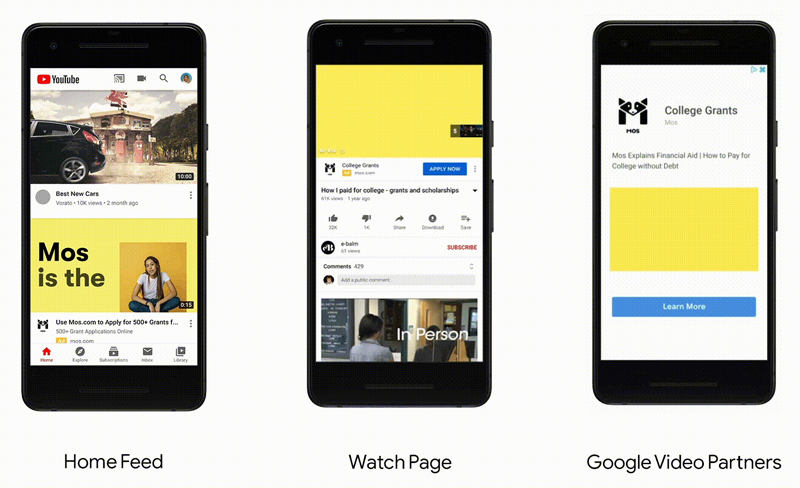
Google said in October 2021 that video action campaigns would automatically integrate YouTube-connected TV spots.
This is just another method for businesses to broaden their reach.
Video is a good medium for repurposing and republishing existing content, or vice versa. On the one hand, this entails converting a piece of material, such as a blog article, into a video.
On the other hand, you may make a video, post it to your website and YouTube channel, and then do the following:
- Have it transcribed and turned into an article (with an embedded YouTube video for better rankings)
- Upload the raw video to Facebook with the transcription as subtitles (native Facebook videos get a much higher impression share and engagement than shared YouTube videos)
- Extract the audio separately and use it as a podcast episode.
- Include video thumbnails in your email marketing efforts, as well as the term “video” in subject lines, which has been proved to raise open rates by 19%.
Without a doubt, video marketing will be one of the most important digital marketing trends this year and beyond. If you aren’t already producing marketing videos, you should think about broadening your digital approach. People like watching stuff, so provide it to them.
9. Short DIY Videos
Social media has been dominated by new types of video content.
As stated in previous sections, TikTok has altered the social media environment away from status updates and curated picture grids and toward brief video broadcasts. It didn’t take long for other sites to leap on board, with Instagram debuting Reels and YouTube focusing on ‘shorts.’
TikTok’s success paved the way for other platforms to follow in its footsteps and develop their own short video content formats.
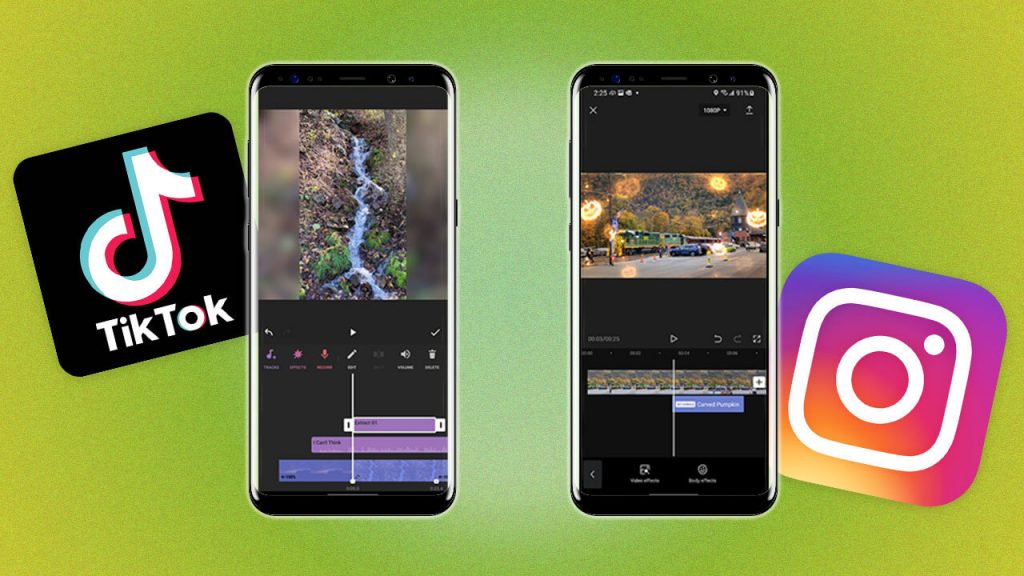
Instagram just released Instagram Reels, while YouTube also unveiled its collection of short-form content.
The great thing about these videos is how simple they are to create. Not only that, but these short, real-life video snippets demonstrate the more young, DIY viewpoint that today’s customers demand.
There is no denying that short video segments are now the standard on social media, elevating likes and shares to new heights.
Customers nowadays do not have the time or patience to view lengthy videos. In fact, 33% of individuals will quit viewing a video after thirty seconds, and 60% will stop watching after two minutes.
Short films that go directly to the point and save time are the rage in video marketing right now. That’s why Instagram Stories and videos on Reels and TikTok have been so popular in recent years. In 2022, Tiktok alone is predicted to have 1.5 billion users.
Short videos show the fast-paced method in which we consume material and underline the necessity for basic and short messaging or interesting content that invites us to participate—whether it’s learning a new dance, joining a challenge, or doing surveys and polls.
The beautiful thing about these short videos is that anybody with a phone can put together a quick video that isn’t extremely professional. Not only that, but these brief engaging videos content is frank, behind-the-scenes, DIY, true tales, and has a more unpolished appearance, which younger customers want.
Short videos use less bandwidth, keep your attention, and have higher retention rates.
10. Podcasts Will Continue To Soar
People like listening to podcasts, whether they are produced by people or businesses. According to one estimate, 80 percent of people will listen to the majority of a podcast episode.
And now that Google is presenting podcast episodes directly in its search results…
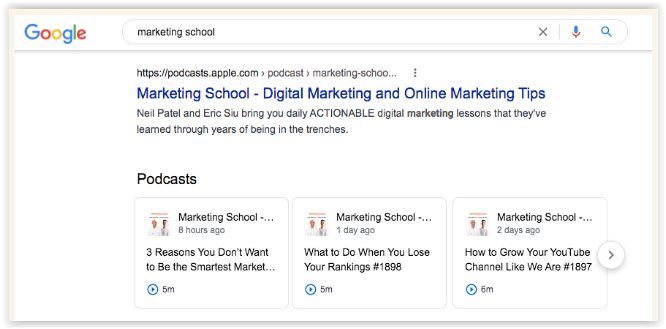
…you need to focus more on improving your podcast.
From the standpoint of digital marketing, there are two approaches to podcasts. The first is to treat them as influencers, promoting to their audience through the podcaster. You may, however, produce your own podcast, particularly because consumers appreciate podcasts from both individuals and businesses.
Furthermore, since “users are expected to interact with speech-enabled devices more often,” podcasters may “boost brand exposure and audience engagement using voice SEO strategies,” such as:
- Assign a keyword to each podcast episode.
- Make a separate page for each episode.
- Write a 300-word blog entry for each episode.
Podcasts, on the other hand, might be difficult for marketers since listeners may not be asked to take action, such as signing up for an email subscription. In the next years, marketers will embrace a more user-friendly strategy that will prioritize:
- Employing just one call to action every episode.
- Outlining the main elements of the episode.
- Making it simple to listen to a podcast – for example, without needing a sign-up, download, or any other hassle merely to listen to an episode.
Podcasts, on the other hand, have their own set of obstacles, such as the need for optimization via keywords, blog articles, and other SEO strategies. There is also a separate skill set to learn if you want to execute it correctly and effectively. However, with podcasting becoming more popular by the day, there is a lot to be gained.
11. Examine The Sentiment On Social Media
Have you seen a drop in trust in social media influencers?
Influencer marketing has long been the go-to approach for promoting a certain product or improving brand recognition.
That began to alter a few years ago and will probably peak very soon.
The many incidents involving Instagram superstars triggered a trust issue. People are growing increasingly skeptical of influencer endorsements.
However, this does not imply that influencer marketing is ineffective.
Sentiment analysis will be a major changer. Many technologies, like Brand24, provide this feature, and the need for sentiment analysis will only increase in the future.
NLP, which stands for Natural Language Processing, is the foundation of sentiment analysis. The technique comprises AI learning the intricacies of human communication and determining if an online comment is favorable, negative, or neutral.
Detecting sarcasm or irony was an issue for technology a few years ago, but technology has progressed since then. Many technologies can accurately identify sarcastic utterances and classify them as negative sentiment comments.
Posts with negative sentiment often get a high level of interaction, but you don’t want bad comments associated with your business. And if you do, it must be part of the planned campaign, and you must have control over the situation, such as monitoring the number of mentions or your campaign’s social media reach.
12. Meta Will Take Over Social Media
Meta is a result of Facebook’s rebranding. Although most Facebook services have been left unchanged, Meta is betting big on the Metaverse, a term for virtual and augmented reality (VR/AR) experiences. And it is for this reason that Meta may be more successful than Facebook.
According to 2021 Hubspot Blog Research, 35% of marketers are using AR or VR in their strategies, and over half aim to expand their use in the future. AR and VR both improve consumer experiences online and at live events, and they are ideal for sticking out from the crowd.
Why should you be concerned? Because of the expensive cost of AR and VR, they have advanced slowly via marketing; Meta may be the instrument to keep ahead of the competition without investing too much money.
13. Voice Search May Finally Gain Traction
People’s search habits have changed. Or, at the very least, there are more choices than ever before.
To appreciate the potential of voice commerce, consider one facet of the consumer’s purchasing process: ease. A customer is unlikely to buy a 55″ TV using a voice assistant, but they are more likely to buy a little, low-priced item that is too inconvenient to look for online.
According to Walker Sands, “food and groceries” are first on the list of things people have bought using a voice-controlled device (at 21%), followed by Consumer Packaged Goods (CPG) at 16%.
- Walmart was one of the first companies to capitalize on this new trend, partnering with Google to introduce the Walmart Voice Order function. People who possess a Google Home may now say, “Hey Google, speak to Walmart,” choose the item they want, and put it in their shopping basket.
- Amazon has also integrated voice shopping into AmazonFresh, allowing consumers to shop using any Alexa-enabled device.
As the number of voice assistant devices on the market increased, so did the development of voice search apps and smart speakers.
This has compelled businesses to reconsider their digital marketing methods. If you’re still on the fence about using voice search, consider this:
- Voice searches account for 20% of all online searches.
- 58 percent of customers used voice search to discover information about local businesses.
- 40% of individuals use voice search daily.
- Every month, 1 billion voice searches are conducted.
Voice search is already important in giving relevant information to search engine users. Google Assistant has 1 million actions, and Alexa has over 100,000 skills, which represent features that enable their voice assistants to respond to user requests and questions extremely specifically:
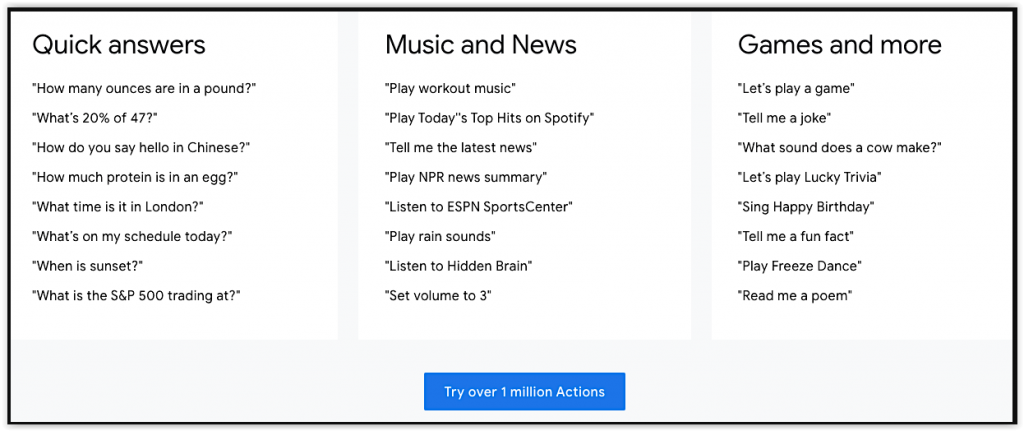
Keep in mind that not only will more organizations create audio content to increase brand recognition (which you should do as well), but advertisements are on their way as well. This means Alexa will provide you with the answer to your query as well as a “message from her sponsor.”
According to the most recent statistics (which are now a few years old, so we can presume that this percentage is greater), 27 percent of all smartphone searches are voice-activated, which means they are triggered by a set of “trigger words” such as “how,” “what,” “best,” and “easy.”
Back in 2019, several marketing experts projected that voice search will be a digital marketing trend. However, it was not as well-received as we had hoped.
This year, though, you may wish to reconsider your marketing plan and integrate voice search optimization. And don’t worry, it’s not as difficult as you would think.
For years, marketers have focused on content marketing and SEO, modifying and optimizing blog articles to rank first on search engine results pages (SERPs). Search engines like Google still employ textual information to deliver results for spoken inquiries, so optimizing for voice search is no different.
The disadvantage is that it creates so-called zero-click searches, which may be aggravating for digital marketers. More on this later.
Unfortunately, there is currently no method to analyze voice search traffic using tools like Google Analytics or Google Search Console. If that ever occurs, it will be a watershed moment for digital marketers.
While conventional search is still alive and thriving, voice and visual search are more popular than ever. In reality, these elements are becoming more important in how consumers locate stuff. Voice and visual searches are used by people to find:
- Products
- Services
- Brands
- Related Products
These are just a few instances. People are growing more acquainted with new methods of searching because of technologies such as Alexa and Google Lens. In reality, it is getting more convenient, particularly in the case of visual searching, where you may not know the brand you are looking for or what to search for to locate it.
Because of these more popular forms of searches, new marketing trends have evolved. Photographs and other pictures are more significant now than ever before. Furthermore, with voice-activated advertisements soon becoming a reality, businesses must be prepared to react.
Here are some examples of how businesses are incorporating voice search into their digital marketing strategies:
- Customers may purchase pizzas from Domino’s without having to pick up the phone.
- Users of PayPal may use Siri to transfer money to friends, family, or companies.
Here’s how voice commerce may help your e-commerce store:
- Approach your search technique as if it were a conversation. As a searchable discussion with the consumer, create content using long-tail keywords.
- Concentrate on anticipated questions and relevant keywords. Use trigger words for voice searches (such as who, why, when, how, where, should, could, does, etc.).
- Don’t restrict yourself to certain terms. Instead, examine the context of the customer’s query and provide useful material that addresses the inquiry.
- Combine various terminologies to generate unique collections of keywords and phrases. They should, of course, include all pertinent details of queries.
- Create memorable product descriptions that sound fantastic when read aloud. To coincide with ordinary speaking patterns, write naturally.
It’s important to remember that voice search isn’t simply another avenue for forced messages and sales. Instead, marketers must establish a new approach to customer engagement, and this channel should be part of a larger, more integrated brand experience.
14. 5G Technology
In a world obsessed with mobile, the arrival of 5G technology, or the fifth generation of mobile technology, is likely one of the most crucial digital marketing trends of 2022. The upgrade ushers in a new age of digital communications, and its influence will be seen in almost every business.
According to George Slefo, a former AdAge tech reporter:
“The arrival of 5G may also finally bring millions of rural consumers into the high-speed data lanes where marketers increasingly sell their products. It might even disrupt the digital duopoly of Google and Facebook by arming telecom companies with unprecedented data for ad services.”
T-Mobile emphasizes the advantages of 5G speed for the expanding augmented reality business, highlighting how it may aid in the development of a virtual heads-up display. In sports and recreation A, 5G Internet speeds may assist riders in detecting danger from all sides.
The European Union has a bold 5G action plan that calls for continuous 5G coverage of important highways and trains by 2025. Furthermore, the technology is intended to power 100 times as many linked devices.
Without a question, 5G technology will change how we get internet information, from digital advertisers to normal users.
15. Green Marketing
Green marketing, often known as “eco-marketing” or “environmental marketing,” is the activity of creating and promoting goods based on their actual or perceived environmental sustainability.
Green marketing is merely one component of a larger push toward sustainable industrial processes, which includes:
- Usage of recycled and/or recyclable materials
- Using renewable resources
- Reducing the amount of packing used
- The creation of repairable items to reduce waste.
Green marketing may offer your company access to new, younger consumers as well as a competitive edge over other, comparable companies. It may also improve your business’s image and build brand loyalty.
According to the NielsenIQ data report:
- Consumers spent $128.5 billion on environmentally friendly fast-moving consumer goods (FMCG).
- 90% of Millennials said they would be prepared to pay extra for items with sustainable or environmentally friendly components.
- 48% of US consumers said they would definitely or probably modify their purchasing patterns to decrease their environmental effect.
According to Allied Market Research, the worldwide green technology and sustainability market will be worth $48.36 billion by 2027, expanding at a 24.3 percent CAGR from 2020 to 2027.
Here are some pointers to get you started:
- Obtain accreditation from organizations such as Green America, Green Business Certification Inc., or Green Seal.
- Promote your green approach via your various marketing platforms, such as blog postings, social media, and so on.
- Incorporate environmentally friendly practices into your company’s culture.
- Contribute to eco-friendly projects and efforts.
16. Visual Search
We have text search, voice search, and now visual search. Users may leverage visual search to submit a picture and then run a Google search on the image to receive results.
Visual search is one of the most sophisticated and competitive segments in the technology industry.
Google, Pinterest, and Microsoft are all vying for a piece of the action.
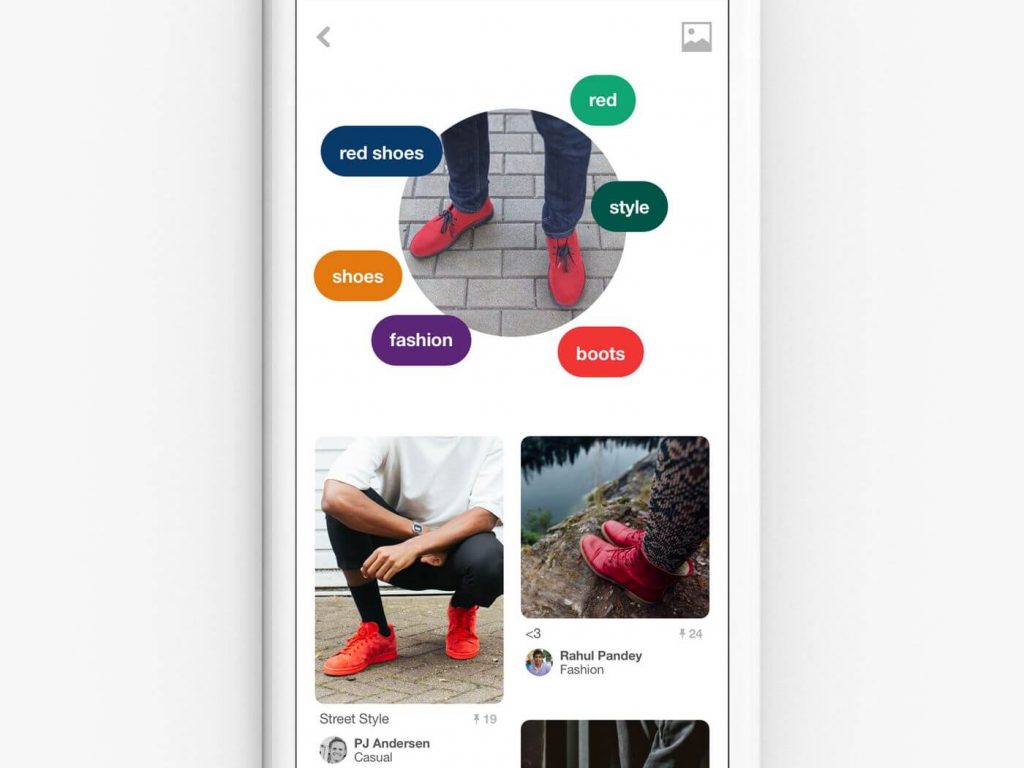
Lenses on Pinterest
Users may utilize the Pinterest lens to snap a picture of an item to find out where it can be purchased online. It even shows you images of related things.
Pinterest’s Lens detects 2.5 billion home and fashion products and has generated over 600 million searches on the company’s mobile applications and browser extensions. They have experienced a 140 percent increase in Lens use since its introduction.
Pinterest’s functionality has been updated further with the addition of the following features:
- Pincodes, which employ QR codes to get inspiration while users are out shopping or reading their favorite periodicals.
- Idea Pins, a concept akin to Snapchat or Instagram Stories in which multi-page video formats are used for artists who wish to submit high-quality, evergreen content straight to Pinterest. It is now only accessible to users in the United States, United Kingdom, Australia, Canada, France, Germany, Austria, and Switzerland.
- AR Try, an augmented reality tool that allows you to try out new eyeshadows from top brands like Lancome, YSL, Urban Decay, and NYX Cosmetics.
Google Lens
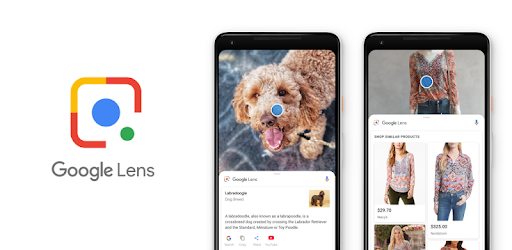
Google Lens is a Google visual search engine that detects objects and landmarks using a camera app.
Here’s what you can accomplish if you photograph the following items:
- Clothing and housewares: Discover comparable items and where to purchase them.
- Barcodes: A barcode may be used to locate information about a product, such as where to purchase it.
- Business card: Make a note of the phone number or address.
- Book: Read reviews and get a synopsis.
- Event flyer or billboard: Make a note of the event in your calendar.
- Landmark or building: Learn about its history, hours of operation, and more.
- Painting at a museum: Learn more about the artist by reading about him or her.
- Plants and animals: Research species and breeds.
17. Live Stream Shopping
Live streaming is a relatively new notion in the Western world, yet it is prevalent in China. If you believe that’s an exaggeration, consider this: In the first half of 2020, one-third of China’s internet users (309 million) tuned in to a live streaming shopping session.
Furthermore, Viya, one of China’s most famous live streamers, made around $49.7 million in only one day of live broadcasting in October 2019:
 Source:Singlegrain.com
Source:Singlegrain.com
The most popular product categories for live stream shopping, according to McKinsey, are clothes and fashion, beauty items, food, consumer electronics, and furnishing and home decor:
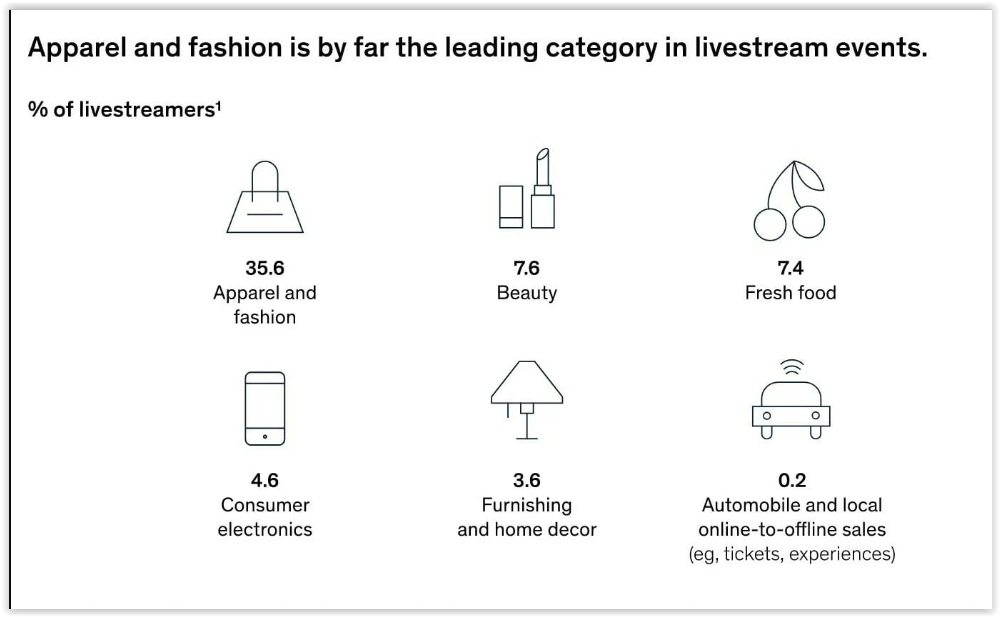
Source:Singlegrain.com
According to Coresight Research, live streaming commerce will generate $25 billion in sales in the United States by 2023.
Levi’s and Tommy Hilfiger, two early adopter businesses in the United States, aim to launch live stream shopping events. Amazon, Facebook, and Instagram are all working on making this a reality.
While live stream e-commerce is still in its early stages, McKinsey advises beginning with infrequent streams focused on 1-5 products and relying on TikTok, Instagram, Facebook, or Amazon Live, and then transitioning to a “dedicated in-house team or agency staff to plan and develop content for live streams, including storylines, scripts, and hosts or influencers” and broadcasting them across multiple channels.
18. Personalize Your Message
We leave a massive quantity of data online. As a result, many of us want hyper-targeted personalization. This marketing tactic cannot be overlooked while discussing digital marketing developments.
We want to see the precise stuff we want at the exact moment we need it. This implies you must personalize your digital marketing message and deliver it at the appropriate time.
The good news is that further targeted messages can be prepared. It’s also really simple. Whether it’s advertising with Google Ads or sending welcome emails with Getresponse, several marketing platforms allow for automated personalization.
The technology and resources at our disposal have made individualized information more accessible, and it attracts customers considerably more effective than broad marketing. As a result, customized marketing is projected to play a larger role in the future, and it may be applied in a variety of ways:
- Content
- Products
- Emails
Personalization may be applied to many of the other themes listed. Send emails that are tailored to a certain consumer, even if it is only their favorite style of material. In fact, more than 70% of customers only act when marketing messages are tailored to their specific interests.
Tailored content may also be addressed in a variety of ways, ranging from product suggestions to personalized video campaigns and applications that show user data in engaging, interactive ways. Furthermore, the more time you spend studying your audience, the more value you will get from your efforts.
According to Kevin George of EmailMonks, tailored, triggered emails based on behavior outperform batch-and-blast emails by three times.
Easyjet is a fantastic illustration of the effectiveness of customized communications.
EasyJet created and deployed an email message campaign that leveraged their customers’ travel history to build tailored stories that recommended perfect trip locations for them.
How successful was this?
The airline saw a 25% increase in click-through rate compared to non-personalized emails, resulting in increased conversions for the firm.
To stand out in 2022, you must customize your marketing, which includes customizing content, goods, emails, and so on. Consumers, it turns out, like personalization:
- According to SmarterHQ, 72% of customers only act on marketing messages that are tailored to their specific interests.
- According to a Salesforce poll, marketers perceive the most advantages from personalization in terms of customer experience (64 percent), conversion rate improvement (63 percent), and visitor engagement (55 percent):
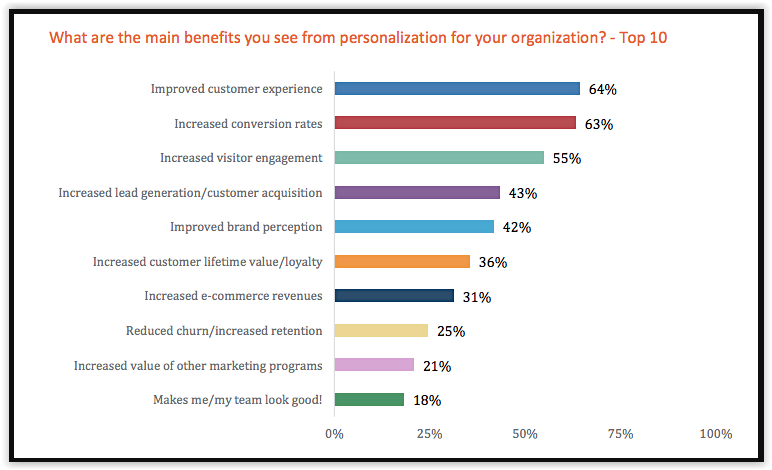
Source: singlegrain.com
Similarly, EmailMonks’ Kevin George claims that “personalized, triggered emails based on activity are 3X better than batch-and-blast emails.”
When it comes to studying instances of the power of personalization, it’s difficult to ignore Netflix and Amazon, which have very effective personalized suggested items or movie titles. Here are a few more organizations that are leveraging personalization effectively today:
- EasyJet launched a data-driven email campaign that builds bespoke tales based on consumers’ travel experience with the airline, recommending where they would want to fly next. A total of 12.5 million unique emails were sent, with a 25% greater click-through rate than non-personalized emails.
- Cadbury’s developed a customized video campaign that matches viewers with a Dairy Milk flavor based on information from their Facebook profile, such as age, interest, and geography. The campaign produced a click-through rate of 66% and a conversion rate of 33.6 percent, demonstrating that the personal touch works.
- Starbucks utilizes a gamified mobile app that pulls on data such as purchase history and location to become as personal as possible, allowing users to personalize their beverages, and promotes continued usage with its rewards system—which has increased its revenue to $2.56 billion.
Don’t forget to segment your consumers while developing your e-mail marketing plan. You may utilize complex tools to generate various subscription pop-ups and categorize users depending on when and where they subscribed.
Don’t simply target all of your fans when developing social media advertising. Consider the many client types who could be interested in your goods and develop ad sets based on their interests. Your click-through rate will rise.
But be cautious. When developing customized communications, avoid being too precise. People prefer relevant advertisements, but they may freak out if you show them how much you know about their interests.
19. Native Advertising
Is it any wonder that consumers despise internet advertisements? It shouldn’t be, given that 763.5 million people globally use ad blockers to avoid commercials, forcing marketers to experiment with other acquisition methods.
Marketers have discovered native advertising among the various possibilities accessible, some of which we have discussed below.
Native advertising is a sort of non-disruptive digital advertising in which the ad blends in with the design of the web page on which it is shown. Consumers frequently can’t tell native advertisements apart from the material in which they appear — thus the term “native”:
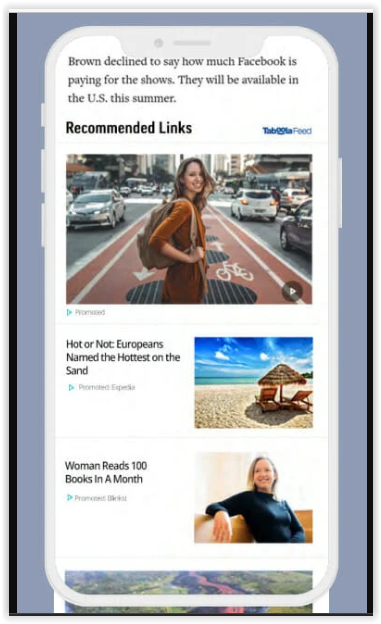
According to AppNexus research, native advertisements have an average CTR of 0.80 percent, whereas display ads had a CTR of 0.09 percent – that’s 8.80x greater than display ads.
According to ADYOULIKE, native advertising spend is predicted to rise 372 percent from $85.83 billion in 2020 to a total worldwide value of $402 billion by 2025:
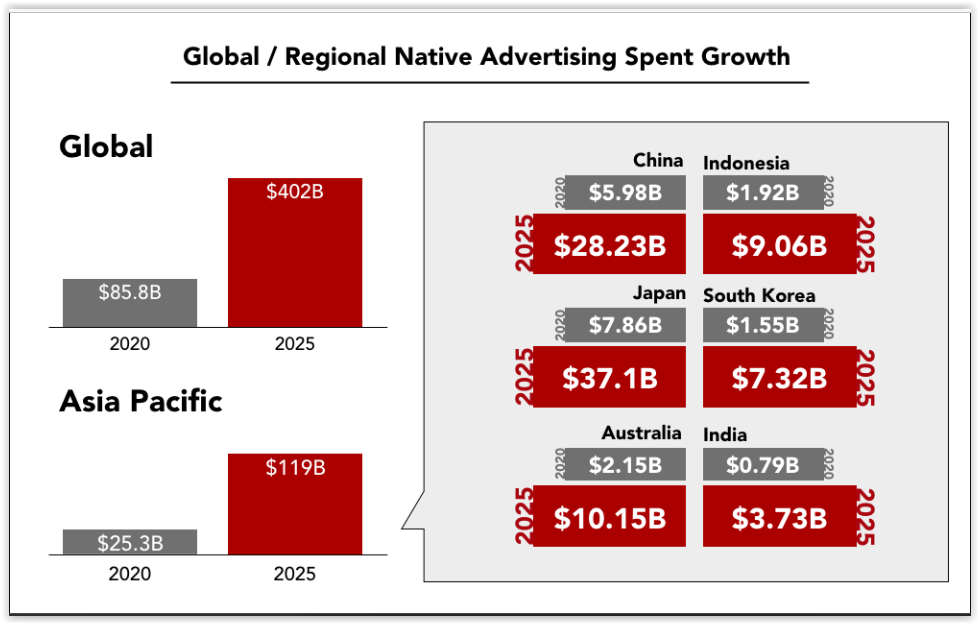
Source:Singlegrain.com
As a result, native advertisements will continue to gain prominence, becoming a necessary component of a marketer’s entire advertising strategy.
20. Internet of Things Advertising(IoT)
Over the past decade, the “Internet of Things” (IoT) has made a lot of noise. Let’s describe it briefly to grasp its marketing potential.
The Internet of Things (IoT) refers to a network of objects, ranging from smart automobiles to home appliances to wearable technology, that are linked to one another and the Internet. The linked devices in this network may acquire, exchange, and analyze the information as well as make actions concurrently.
More than 75 billion IoT devices are predicted to be in use by 2025, with a total global cost of $1.1 trillion.
Of course, this implies that businesses and marketers want to utilize (or are already utilizing) this data for their own company and advertising. As an example:
- Johnnie Walker has a Blue Label bottle with built-in electronic sensors that can detect if the bottle has been opened and its location in the supply chain.
- Malibu, another beverage business, goes a step further, deploying “linked” bottles as a digital touchpoint to advertise exclusive content.
The prospects for IoT advertising are only beginning to emerge, and they have the potential to disrupt the market in ways we cannot yet envision. The only issue that remains is one of privacy. Given the large quantity of data collected by IoT devices, marketers must use it in ways that are both relevant and respectful of the user’s privacy.
21. Diversity And Inclusivity
Inclusion and diversity are no longer exclusive to the domain of human resources. To improve relationships with consumers and promote a culture of good social change in 2022 and beyond, marketers must elevate diversity in all of its forms, represent the underprivileged or underrepresented, and eradicate long-standing cultural prejudices.
Companies must exercise caution to ensure that their messaging, pictures, voices, and beliefs reflect the whole spectrum of possible consumers and do not exclude anybody owing to their own unconscious prejudice.
In 2019, Adobe performed a survey of over 2,000 U.S. consumers and discovered:
- 61 percent said advertising diversity was essential.
- 38% indicated they are more inclined to trust firms that use more diverse advertising.
- 120 million Americans (out of a population of 332 million) do not see themselves depicted in advertisements.
According to a Nielsen report:
“With 43 percent of the 75 million Millennials in the United States identifying as African American, Hispanic, or Asian, a company that has a multicultural strategy lacks a growth plan.”
Some examples of how companies may make their marketing more inclusive are:
- Tone: Take a close look at how you portray a topic — for instance, a typical person of your target demographic. Examine the phrases and terms you use to represent them in your marketing and content.
- Language: Take note of the words, symbols, and phrases you use to describe individuals and their issues.
- Representation: Before posting a piece of material or an advertisement, ask yourself, “Does this represent society?” Are we promoting a wide range of viewpoints?
22. Conversational Marketing And High-Quality Interactions
Conversational marketing is nothing new for brands that have been talking with their consumers for years. However, with the development of social media and chatbots, this kind of conversational marketing is becoming more prevalent and altering the landscape of how companies connect with their consumers.
And that connection is growing more personal, with many businesses adopting a conversational style of communication. The same may be said about marketing.
Consumers expect to be able to contact and engage with a company instantly and at all times. They expect their inquiries to be addressed, and if they do not get them, they may seek answers elsewhere. They are more likely to choose a company that assures they receive what they want right away.
Conversational marketing achieves its purpose by using the required dialogue-focused communication approach. It is often used to increase engagement and convert leads. And what’s even better is that it works with nearly any channel. In fact, it must operate across several media since customers want to be able to contact you at any time and from any location.
The spike in interest in conversational marketing is most likely due to a change in consumer habits that has been swiftly accelerated by technology in recent years—namely, the expectation of immediate and direct communications in real-time, whether with friends, colleagues, or businesses. And, with chatbots playing a greater role, these discussions can take place on a wider scale, more quickly, and more effortlessly than ever before. Large amounts of data are generated as a result, which aids in understanding the requirements and expectations of clients.
Unlike conventional marketing methods, this kind of marketing is now accessible across numerous channels, enabling firms to reach consumers on their terms: on the devices, platforms, and time schedules that are most convenient for the customer.
“Today’s shoppers want to get what they’re searching for immediately, not later,” says David Cancel, founder, and CEO of Drift. [And] in the manner in which people like to connect.”
Conversational marketing’s major purpose is to improve the user experience via a feedback-driven strategy that generates more engagement, greater loyalty, and more sales.
In fact, according to Drift, 41.3% of customers now use conversational marketing technologies to make purchases.
Companies may implement the following ways to carry out a conversational marketing strategy:
- Chatbots
- Customized videos
- Customized emails
- Virtual sales assistants
ThoughtSpot is one firm that profited from conversational marketing, as it witnessed 10X more sales discussions, 70% more marketing qualified leads, and 64% more meetings scheduled after using it:
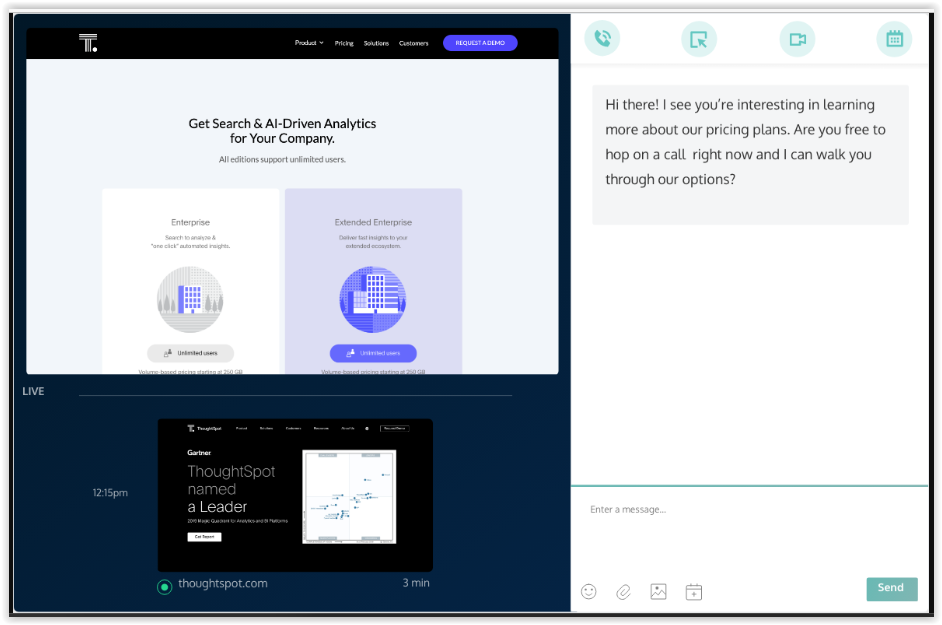
This not only increases the brand’s relatability but also gives the consumer an overall happy and rewarding experience. However, it is a difficult area to master: make sure you know precisely what your consumer expects and what their requirements are so that the dialogue does not derail or be unhelpful.
23. Chatbots Improve Customer Experiences
AI-powered chatbots are increasingly being integrated by companies to assist them in interacting with consumers in real-time, regardless of the time of day or night.
Companies like Lyft are already using chatbots, allowing clients to request a trip from Lyft through chat or voice using Amazon Echo.
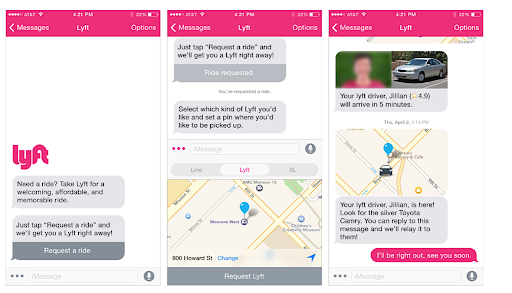
Their chatbot tells the consumer of the driver’s precise position.
Chatbots are a hybrid of conversational marketing and artificial intelligence (AI) technologies. They are capable of delivering human-like automated communications in real-time. Of course, they depend significantly on AI technology, but they are a perfect example of the growing trend of conversational marketing. They can:
- Respond to queries immediately
- Offer 24-hour service
- Respond to basic questions
- Direct consumers to useful resources
Furthermore, chatbots are well-received by the majority of people, resulting in a favorable customer experience. Chatbots are likely to become more essential as a result of this, and in part, because AI technology is becoming more advanced. Chatbots also free up resources that may otherwise be used elsewhere.
According to polls:
- The most significant advantages of chatbots for businesses include 24-hour service (64%), rapid replies to inquiries (55%), and solutions to basic questions (55 percent).
- According to Uberall, 80 percent of users had favorable encounters with chatbots.
- According to Juniper Research, eCommerce transactions using chatbots will exceed $112 billion by 2023.
- According to Insider Intelligence, consumer retail purchases through chatbots will reach $142 billion by 2024, up from $2.8 billion in 2019.
Many clients enjoy engaging with chatbots because they are available 24 hours a day, provide rapid responses, and properly remember their complete purchasing history. These virtual assistants provide excellent customer service by exceeding expectations and automating monotonous chores, freeing up your staff for more vital responsibilities.
Chatbots will become more important for a great customer experience as more people get used to them.
24. Geofencing Is Improving Locational Marketing
It is not a new technique to use a locality to improve digital marketing. However, geofencing adds some intriguing innovation to the mix, and it is projected to develop substantially in the next year. Part of this is due to the fast improvement of mobile technology, but real-time location-based marketing is intriguing enough on its own.
Geofencing’s primary function is to convey information about nearby areas of interest. It might be a restaurant, a gas station, or a fitness center. The purpose is that you will get an alert when you enter the location of that place of interest. It might even serve as a call to action or an incentive to attract new customers.
One wonderful example is locating a spot to eat or a gas station on a lengthy drive without actively looking. You may just wait for a notice when you are in range and then go over. And the strategy is incredibly successful, providing digital marketers with a whole new weapon.
According to Reveal Mobile, the top five retail sites for geofencing are restaurants and bars, health and beauty, entertainment, grocery shops, and pet stores:
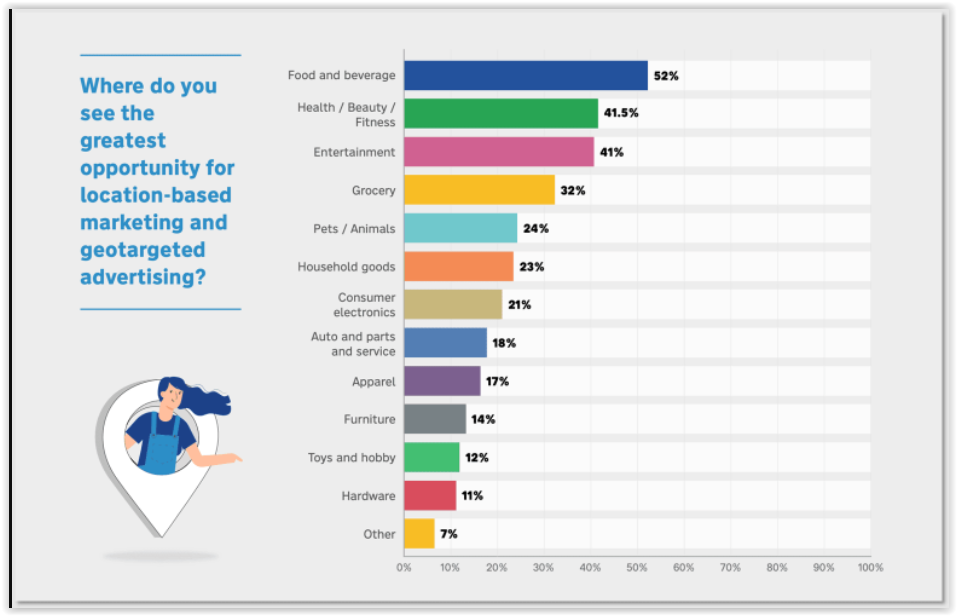
Source:Singlegrain.com
Furthermore, they discovered that geotargeted audiences perform better or the same as other targeting strategies on average:
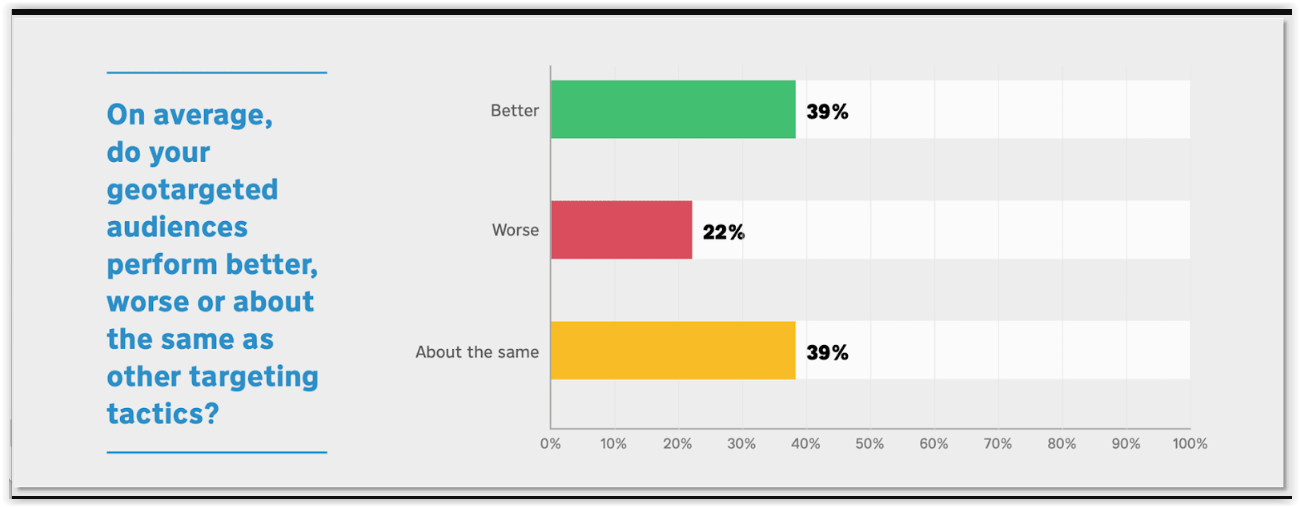
Source:Singlegrain.com
Waze is used by the American gas company 76 to designate their gas stations on a map around California. As cars approach, a logo appears on their map, directing them to a gas station and giving them entrance into a competition if they fill up. Their “Tank 5” campaign led to a 6.5 percent increase in fuel station navigation:
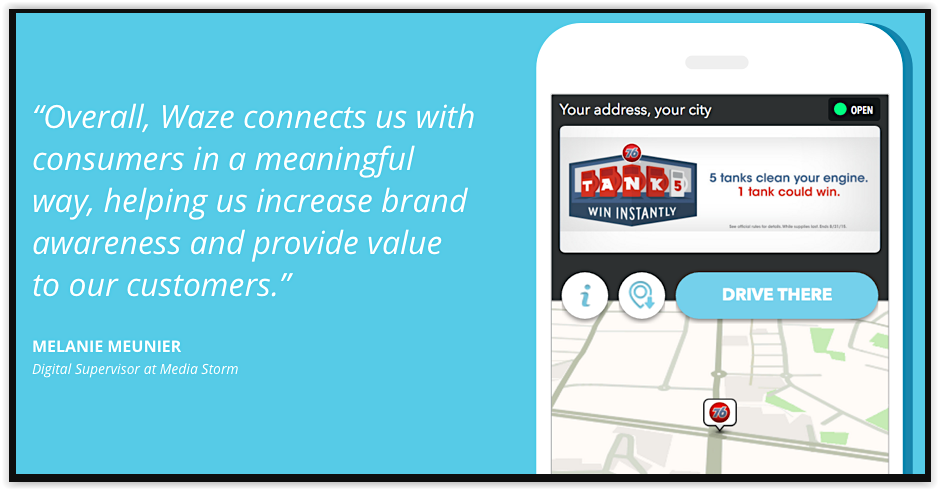
Geofencing
Geo-fencing will become more significant in marketing strategies for sectors that seek to convert internet users into brick-and-mortar consumers.
25. Search Intent Is Now Critical
AI technology may help you better understand consumer behavior and search trends, but it also considers search intent when providing results to consumers. Google is big on this, attempting to find out why a search was performed to deliver a category of material that meets the user’s requirements. It seeks to provide answers to questions such as:
- Do they want to learn how to do something?
- Are they looking to buy something?
- Do they wish to go to a certain location?
Guide posts are an excellent illustration of this in action. When a person searches for “how-to,” Google emphasizes videos and webpages that serve as tutorials, ranking them higher. It is the same for various forms of intent, which means that to successfully sell anything, you must ensure that the purpose is correct.
The same AI picks out more local results as well, ranking items like Amazon’s website above the Amazon rainforest if no other justification is offered. Local service providers are treated the same, appearing above service providers in other locations until extra information is provided.
It is unavoidable if you want your work to be rated and seen. However, in terms of marketing, it goes beyond this. When you connect content with search intent, you enhance brand exposure and retention. As a result, it is critical to get a high ranking while also offering them a meaningful experience they will appreciate.
26. Google My Business Verified Listings
Businesses were compelled to turn to methods of efficiently communicating with clients at the local level when areas fell under lockdown and curfew.
With considerable success, Google verified listings extended that chance to companies with a local focus, such as plumbers and veterinary clinics.
Google verified listings improve your company’s SEO and allow it to appear in ‘near me’ searches, including information about your open business hours, location, and star ratings.
Click here to check the status of your Google My Company Listing’s verification, and if it hasn’t been confirmed, you may begin the process of having your business validated by Google.
27. Alternate Search Engines
According to StatCounter, Google accounts for over 92 percent of all search engine traffic, dwarfing its “closest” competitors, Bing and Baidu:

Source:Singlegrain.com
Although minor, the following modifications are worth noting: Google’s market share fell by about 1%, while every other search engine increased. Here are the statistics from two years ago:

Source:Singlegrain.com
It’s difficult to see the world’s most dominating search engine collapsing very soon.
That said, DuckDuckGo, a privacy-focused search engine created in 2008 that has achieved a niche reputation among privacy-conscious users, has lately made some waves with its motto “the search engine that doesn’t track you” because “search engines don’t need to monitor users to generate income”
According to Megan Gray, DuckDuckGo’s general counsel and head of policy, this strategy is profitable: “We earn a lot of money.” I can’t tell you how much we earn since we’re a privately owned corporation. However, we are subject to the California Consumer Privacy Act (CCPA), which requires at least $25 million in yearly sales, which we much exceed.”
While Google has been embroiled in data scandals such as the Cambridge Analytica scandal in 2018 and was officially charged with antitrust violations related to its search and advertising businesses last year, DuckDuckGo has quietly grown its privacy-first search engine, reaching 92 billion all-time searches with nearly 29 billion searches in 2022 alone:
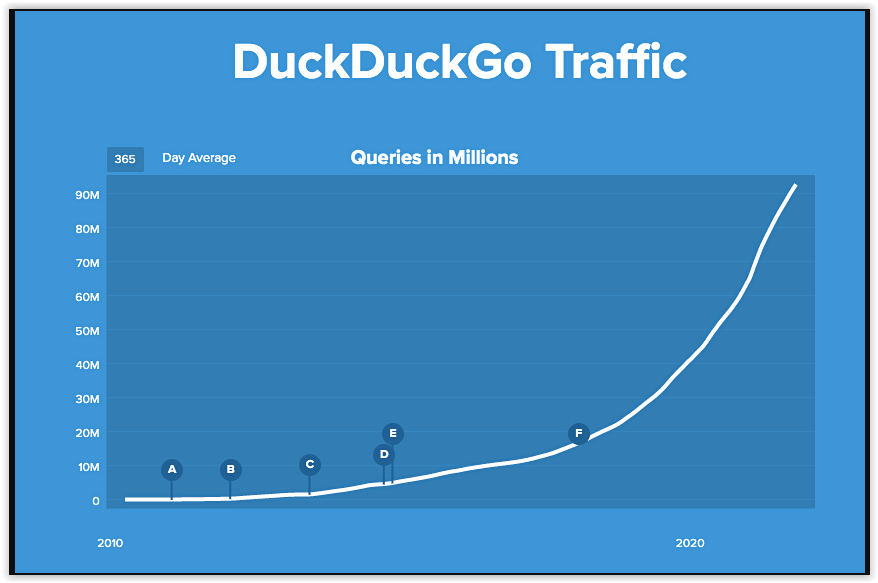
Source:Singlegrain.com
Finally, marketers should think about their audience and where their brand’s content is likely to be seen. Keep this in mind when you optimize your content for more than one search engine.
28. People Want Hybrid Events
The COVID epidemic altered many things, particularly in the digital arena and people’s propensity to connect with the world through the internet. Of course, regular life has resumed since then. Many individuals, however, have become aficionados of virtual meetings and activities.
Because of the growing desire for virtual events, there are two types of audiences to engage: in-person and virtual. Catering to such audiences, fortunately, is considerably simpler with hybrid events and gatherings that provide the best of both worlds. In fact, it attracts more people than previously since it makes events more accessible.
Virtual reality and augmented reality are also factors in hybrid events. Immersive technology has developed, ushering in a whole new way of doing things.
29. Content Segmentation
Segmentation has been around for a long time; most will use them for client segmentation, which implies targeting consumers with similar demographics or common interests. It is also normal procedure to separate forms of communication like e-newsletters, news, and updates, or offers and promotions.
Moving beyond the usual opt-in or-out marketing methods, organizations should explore more extensive and thoughtful labeling of their email content, which enables a user to opt-out of getting particular types of material.
Bloom and Wild, a floral firm that enables its clients to opt out of advertising related to sensitive events such as Mother’s Day and Father’s Day, is a perfect example of content segmentation in action. In 2019, they introduced the Thoughtful Marketing Movement, which is based on the idea of “serving clients with the same care you would offer your own friends and family.”
Consider how many individuals who don’t celebrate Christmas are bombarded with festive marketing every December: it doesn’t make for a good impression in an increasingly customized digital environment.
30. Content Marketing
According to Rubicly, a B2B marketing platform, at least 88 percent of B2B content marketers believe that providing content helps their audience see their firm as a reliable and trusted resource.
According to the Content Marketing Institute, the following statistics highlight the significance of content marketing as a digital marketing strategy:
- Generate more leads: Content marketing costs 62 percent less than outbound marketing and creates three times the number of leads.
- Lower upfront expenses: When compared to paid search, content marketing offers substantially lower upfront costs and long-term rewards (Google Ads, FB sponsored ads, LinkedIn ads)
- Advertisements not being viewed: Over 615 million internet-ready devices use ad blockers, which means that your ads aren’t being seen by as many people as you’d want.
- More business your way: Businesses with blogs get 126 percent more leads than those without.
- More conversions: On average, content marketing generates 6x the number of conversions as other digital marketing techniques.
31. SEO A/B Split Testing
Testing and analysis will be crucial to digital marketing efforts in 2022, with SEO A/B split-testing seeming to be the most popular testing method. SEO A/B split testing enables you to determine which factors in your campaign are driving the desired outcomes.
ClickFlow is a tool that analyzes top-ranking content pieces on Google SERPs with similar content as yours to provide insights into untapped SEO potential buried in your content.
